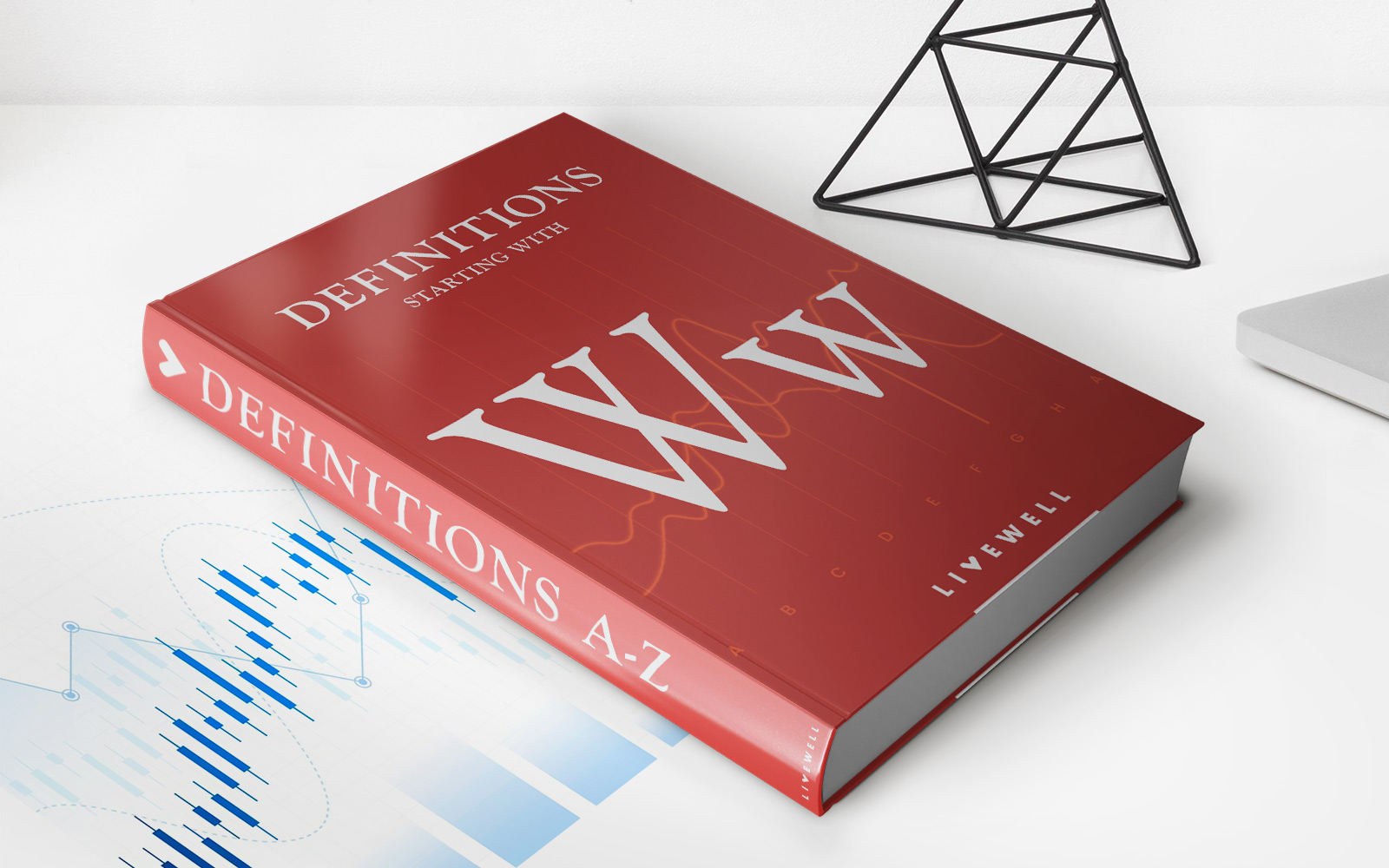

Finance
What Is A Waiting Period For Insurance?
Modified: March 1, 2024
Discover what a waiting period for insurance is and how it affects your finances. Get insights into how this important aspect of insurance coverage can impact your financial planning.
(Many of the links in this article redirect to a specific reviewed product. Your purchase of these products through affiliate links helps to generate commission for LiveWell, at no extra cost. Learn more)
Table of Contents
Introduction
Insurance is an essential tool that provides financial protection and peace of mind in the face of uncertain events. Whether it’s health insurance, car insurance, or any other form of coverage, individuals rely on insurance to safeguard their interests and mitigate potential risks. However, many insurance policies include a waiting period, which is an important aspect to understand for policyholders. In this article, we will explore what a waiting period is, why it exists, and how it impacts insurance coverage.
A waiting period, as the name suggests, is a designated time frame that policyholders must wait before they can access the full benefits of their insurance policy. During this waiting period, the policyholder is not eligible to file claims or receive coverage for certain services or events. It is important to note that waiting periods can vary depending on the type of insurance and the specific policy terms.
The primary purpose of a waiting period is to prevent fraudulent activities and protect insurance companies from adverse selection. Adverse selection occurs when individuals purposely obtain insurance coverage with the intention of immediately filing claims for pre-existing conditions or seeking expensive services. By implementing a waiting period, insurance companies can mitigate this risk and ensure the sustainability of the insurance pool.
Definition of a Waiting Period
A waiting period, in the context of insurance, refers to the specific duration of time that policyholders must wait before they are eligible to receive coverage for certain services or events. It is essentially a period of time during which the policyholder cannot file claims or access the full benefits of their insurance policy.
Waiting periods can vary depending on the type of insurance and the specific policy terms. For example, in health insurance, a waiting period may be imposed for coverage of pre-existing conditions, maternity services, or specific surgeries. In car insurance, a waiting period may be implemented for coverage of accidents or damage that occurs shortly after purchasing a policy.
During the waiting period, policyholders are still responsible for paying their premiums but do not have the same level of coverage as they would after the waiting period has expired. It’s important for individuals to carefully review and understand the waiting period stipulations outlined in their insurance policy to avoid any surprises or misunderstandings.
It’s worth noting that waiting periods are common in various types of insurance policies, including health insurance, life insurance, disability insurance, and even certain types of property insurance. Each insurance type may have its own specific waiting period requirements, and policyholders should familiarize themselves with these details to better understand their coverage.
Purpose of a Waiting Period
The primary purpose of a waiting period in insurance policies is to protect insurance companies from adverse selection and prevent fraudulent activities. Let’s delve deeper into the reasons behind the implementation of waiting periods:
1. Preventing Fraud: Waiting periods help prevent fraudulent activities by discouraging individuals from seeking insurance coverage with the intent of immediately filing claims for pre-existing conditions or expensive services. By imposing a waiting period, insurance companies can ensure that individuals obtain coverage for genuine needs rather than trying to exploit the system. This helps maintain the integrity of the insurance pool and protects the interests of all policyholders.
2. Balancing Risk: Waiting periods allow insurance companies to balance the risk they assume when providing coverage. By delaying coverage for certain services or events, insurers can assess the likelihood and severity of claims. This helps prevent situations where individuals seek coverage only when they anticipate a need for expensive services. By managing risk effectively, insurance companies can maintain stable premiums and offer sustainable coverage to a larger pool of policyholders.
3. Ensuring Viability of Coverage: Insurance is a mutual agreement between the insurer and policyholders. To ensure the viability of coverage, waiting periods play a crucial role. By limiting coverage during the initial period of the policy, insurance companies can ensure that policyholders contribute to the insurance pool for a reasonable duration before accessing certain benefits. This helps create a financially sustainable system that can provide long-term coverage to policyholders.
4. Cost Management: Waiting periods also assist in managing costs for both insurers and policyholders. By delaying coverage for specific services or events, insurers are able to spread risk and expenses over a more extended period, which can potentially minimize premium costs. Additionally, policyholders can enjoy reduced premiums for coverage that may become effective after the waiting period has elapsed.
Overall, waiting periods serve as an essential risk management tool for insurance companies while providing a balance between the interests of policyholders and the sustainability of coverage. By discouraging fraudulent activities, balancing risk, ensuring the viability of coverage, and managing costs, waiting periods play a crucial role in maintaining the stability and integrity of insurance policies.
Types of Insurance with Waiting Periods
Waiting periods are a common feature in various types of insurance policies. Let’s explore some of the key types of insurance that often include waiting periods:
1. Health Insurance: Health insurance policies frequently implement waiting periods, particularly for coverage related to pre-existing conditions, maternity services, and specific surgeries or treatments. These waiting periods ensure that policyholders do not immediately seek costly medical services or engage in fraudulent behavior, ultimately helping to manage the risk for insurance providers.
2. Dental and Vision Insurance: Similar to health insurance, dental and vision insurance policies may have waiting periods for coverage of extensive treatments, orthodontics, or cosmetic procedures. These waiting periods help prevent individuals from purchasing insurance solely for immediate coverage of expensive dental or vision procedures.
3. Disability Insurance: Disability insurance policies often include waiting periods before benefits are paid out. This waiting period, also known as an elimination period, is the length of time an insured individual must wait before they become eligible to receive benefits. It acts as a deductible period and helps prevent individuals from purchasing disability insurance solely to file claims immediately after the onset of a disability.
4. Life Insurance: Some life insurance policies have waiting periods for certain causes of death, such as suicides or deaths resulting from pre-existing conditions. These waiting periods, typically one to two years, are implemented to deter individuals from obtaining life insurance policies with the intent of immediate payouts for planned self-harm or existing health conditions.
5. Pet Insurance: Pet insurance policies often have waiting periods before coverage becomes effective. This ensures that policyholders cannot immediately file claims for pre-existing conditions or any illness or injury that occurs within the waiting period. The length of the waiting period can vary depending on the insurance provider and the specific policy terms.
6. Travel Insurance: Travel insurance policies may include waiting periods for specific coverage, such as trip cancellation or trip interruption. These waiting periods vary and typically start from the policy’s effective date or the date of booking a trip. Waiting periods help prevent individuals from purchasing travel insurance after an unexpected event has occurred or when they are already aware of a potential trip cancellation.
It’s essential for individuals to carefully review the terms and conditions of their insurance policies to understand the specific waiting periods that apply. By being aware of these waiting periods, policyholders can better plan their coverage and avoid any surprises when it comes to filing claims or seeking certain services.
Duration of Waiting Periods
The duration of waiting periods can vary significantly depending on the type of insurance and the specific policy terms. While there is no standard waiting period that applies universally, here are some general guidelines for common types of insurance:
1. Health Insurance: Waiting periods for health insurance can range from a few months to several years. The waiting period for pre-existing conditions can be as short as a few months or as long as several years, depending on the policy. Maternity coverage may have a waiting period of around 9 to 12 months, and specific surgeries or treatments may have waiting periods ranging from a few weeks to several months.
2. Dental and Vision Insurance: Waiting periods for extensive dental treatments or orthodontics can range from a few months to a year. Cosmetic procedures may have longer waiting periods as well. For vision insurance, waiting periods for procedures such as LASIK or PRK surgery can vary from a few weeks to a few months.
3. Disability Insurance: The waiting period for disability insurance, also known as the elimination period, can range from a few weeks to a few months. It is the length of time an insured individual must wait before they become eligible to receive benefits. The duration of the waiting period is typically chosen by the policyholder at the time of policy purchase, with longer waiting periods resulting in lower premium costs.
4. Life Insurance: Waiting periods for life insurance policies can vary, but they typically range from one to two years. This waiting period applies to specific causes of death, such as suicides or deaths resulting from pre-existing conditions. After the waiting period has elapsed, the policy provides coverage for all causes of death.
5. Pet Insurance: Waiting periods for pet insurance can range from a few days to several weeks. The waiting period often applies to illnesses, accidents, or pre-existing conditions. Coverage for routine care may have shorter waiting periods or may not require any waiting period at all. The specific waiting periods can vary depending on the insurance provider and the policy terms.
6. Travel Insurance: Waiting periods for travel insurance can be as short as a few hours or as long as a few weeks. Waiting periods typically start from the policy’s effective date or the date of booking a trip and apply to specific coverage, such as trip cancellation or interruption. The waiting period ensures that individuals cannot purchase travel insurance after an unexpected event has occurred.
It is important for individuals to carefully review their insurance policies to understand the duration of waiting periods that apply. Being aware of these waiting periods allows policyholders to plan ahead and manage their expectations regarding coverage and claims.
Exceptions to Waiting Periods
While waiting periods are a common feature in insurance policies, there are certain exceptions and scenarios where waiting periods may not apply. It’s important to understand these exceptions to ensure that you have a clear understanding of your coverage. Here are some common exceptions to waiting periods:
1. Group Insurance Coverage: If you obtain insurance coverage through a group plan, such as through your employer, waiting periods may be waived or reduced. Group insurance plans often provide immediate coverage, eliminating the need to wait for the typical waiting periods that would apply to individual policies.
2. Creditable Coverage Transfers: In some cases, individuals may switch from one insurance plan to another and be able to transfer their creditable coverage. Creditable coverage refers to the previous coverage that an individual had, and if the new insurance plan recognizes this coverage, the waiting period may be waived or reduced.
3. Qualifying Events: Certain events may trigger exceptions to waiting periods. For example, in health insurance, if an individual experiences a qualifying life event such as marriage, birth/adoption, or loss of coverage, they may be eligible for immediate coverage without having to go through the waiting period.
4. Emergency Services: In cases of emergency, insurance policies may provide coverage even if the waiting period has not yet expired. This ensures that policyholders receive essential medical care without having to wait for the waiting period to be completed.
5. State Regulations: Some states have regulations that limit the duration or applicability of waiting periods for certain types of insurance. It’s important to check your state’s insurance laws to understand if any exceptions or limitations to waiting periods apply.
6. Pre-Existing Conditions: While waiting periods are often implemented for coverage of pre-existing conditions, some insurance policies may have specific provisions that provide immediate coverage for certain pre-existing conditions. This means you may be eligible for coverage for those pre-existing conditions without having to wait for the standard waiting period to pass.
It’s crucial to carefully review your insurance policy documentation to understand the specific exceptions that apply to waiting periods. If you have any doubts or questions, reaching out to your insurance provider or agent is recommended. Understanding these exceptions will help you navigate your coverage more effectively and ensure that you are aware of any situations where waiting periods may not apply.
Benefits and Drawbacks of Waiting Periods
Waiting periods in insurance policies have both benefits and drawbacks. Let’s explore the advantages and disadvantages associated with waiting periods:
Benefits of Waiting Periods:
-
Fraud Prevention: Waiting periods help deter individuals from obtaining insurance coverage with the intent of immediately filing claims for pre-existing conditions or expensive services. By discouraging fraudulent activities, waiting periods protect the integrity of the insurance pool and ensure fair premiums for policyholders.
-
Lower Premiums: Waiting periods can help manage costs for both insurers and policyholders. By delaying coverage for specific services or events, insurers can spread risk and expenses over a longer period, which can potentially lead to lower premium costs. Additionally, policyholders may enjoy reduced premiums during the waiting period.
-
Sustainability of Coverage: Waiting periods play a crucial role in maintaining a financially sustainable insurance system. By limiting coverage during the initial period of the policy, insurance companies can ensure that policyholders contribute to the insurance pool for a reasonable duration before accessing certain benefits. This helps ensure the long-term availability and affordability of coverage.
Drawbacks of Waiting Periods:
-
Delay in Coverage: Waiting periods can result in a delay in accessing coverage for certain services or events. This can be challenging, especially in cases where immediate medical attention or other urgent needs are required. It’s important for individuals to consider these waiting periods carefully and ensure they have appropriate coverage during the waiting period.
-
Inconvenience for Policyholders: Waiting periods can create inconvenience for policyholders who require immediate coverage. This is especially true in scenarios where individuals need coverage for pre-existing conditions or have anticipated the need for specific services shortly after obtaining insurance. Waiting periods can limit the benefits available to policyholders during the initial phase of coverage.
-
Limited Coverage for Certain Services: Waiting periods can restrict coverage for certain services or treatments. This can be problematic for individuals who require immediate access to specialized medical care or preventive measures. It’s important for policyholders to be aware of these limitations and consider alternative options, such as seeking temporary coverage or exploring other insurance plans if necessary.
Ultimately, waiting periods play a significant role in maintaining the sustainability of insurance coverage and deterring fraudulent activities. While they may present temporary inconveniences for policyholders, they help balance risk, manage costs, and ensure the long-term viability of insurance. Understanding the benefits and drawbacks of waiting periods allows individuals to make informed decisions and effectively navigate their insurance coverage.
How Waiting Periods Impact Insurance Coverage
Waiting periods have a significant impact on insurance coverage for policyholders. They influence the access to benefits and the overall utilization of the insurance policy. Let’s explore how waiting periods impact insurance coverage:
1. Delayed Coverage: Waiting periods result in a delay in accessing coverage for specific services or events. During the waiting period, policyholders are not eligible to file claims or receive coverage for those services. This can be particularly challenging for individuals who require immediate medical attention or need coverage for certain pre-existing conditions.
2. Gradual Benefit Availability: Waiting periods determine when certain benefits become available to policyholders. Once the waiting period has elapsed, policyholders can access the full benefits of their insurance policy. This gradual benefit availability helps insurers manage their risk and ensure that policyholders contribute to the insurance pool for a reasonable duration before receiving coverage for specific services.
3. Coverage Limitations: Certain services or treatments may be subject to waiting periods, resulting in limited coverage during the initial phase of the policy. Policyholders should carefully review their insurance policy to understand the specific limitations and plan accordingly to ensure they have appropriate coverage for their needs during the waiting period.
4. Prevention of Fraud and Adverse Selection: Waiting periods are implemented to prevent fraudulent activities and protect insurance companies against adverse selection. By imposing waiting periods, insurers discourage individuals from obtaining coverage solely for immediate filing of claims for pre-existing conditions or expensive services. This helps maintain the integrity of the insurance pool and ensure fair premiums for all policyholders.
5. Cost Management: Waiting periods assist in managing costs for both insurers and policyholders. By delaying coverage for specific services or events, insurers can spread risk and expenses over a longer period, potentially resulting in lower premium costs. Policyholders may also enjoy reduced premiums during the waiting period, which can help manage their overall insurance costs.
6. Policyholder Responsibility: During the waiting period, policyholders are still responsible for paying their premiums. It is important to continue fulfilling the premium obligations to maintain the insurance policy and ensure its effectiveness once the waiting period has lapsed. Failure to pay premiums during the waiting period may result in the policy being canceled or coverage being suspended.
It is crucial for individuals to carefully review their insurance policy to understand the specific waiting periods that apply and how they impact their coverage. By being aware of these impacts, policyholders can plan their coverage effectively, manage their expectations, and ensure they have the necessary protection during the waiting period.
Conclusion
Waiting periods are a common feature in various types of insurance policies, serving as a risk management tool and a means of preventing fraud. While waiting periods may delay coverage for certain services or events, they play a crucial role in maintaining the stability and sustainability of insurance coverage. Understanding waiting periods and their impact is essential for policyholders to make informed decisions and effectively navigate their insurance policies.
Waiting periods help prevent fraudulent activities and ensure that individuals obtain insurance coverage for genuine needs rather than immediate filing of claims for pre-existing conditions or expensive services. By implementing waiting periods, insurance companies can balance risk, manage costs, and maintain the viability of coverage for all policyholders. While waiting periods may temporarily inconvenience policyholders who require immediate coverage, they help protect the long-term availability and affordability of insurance coverage.
It is important for policyholders to carefully review their insurance policies to understand the specific waiting periods that apply to their coverage. By knowing the duration of waiting periods and any exceptions that may apply, individuals can plan accordingly and ensure they have appropriate coverage during the waiting period. Additionally, policyholders should be aware of any alternative options available to them, such as group insurance coverage or exemptions due to qualifying events or state regulations.
Overall, waiting periods are an integral part of insurance policies that serve to maintain the integrity of the insurance pool, manage risk, and ensure the sustainability of coverage. By understanding the benefits and drawbacks of waiting periods, policyholders can navigate their insurance coverage more effectively and make informed decisions to protect their financial well-being and receive the benefits they need when the waiting period concludes.














